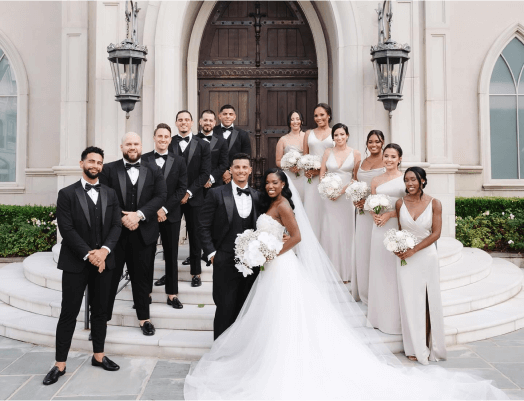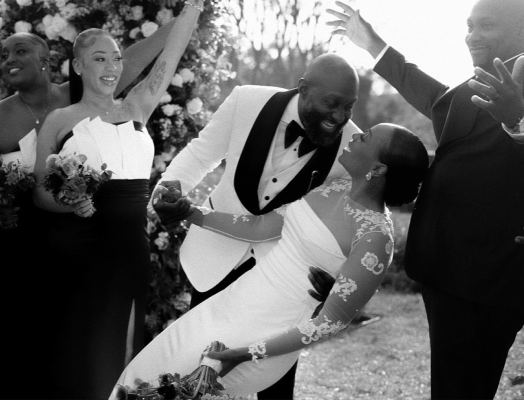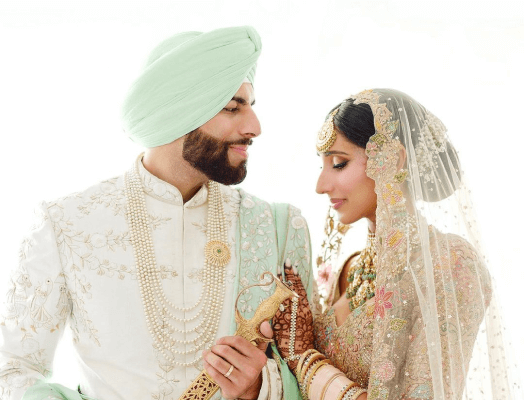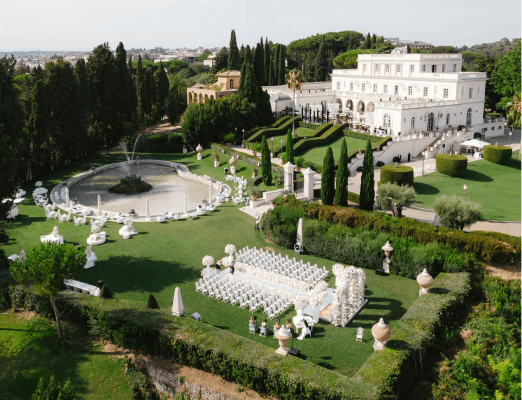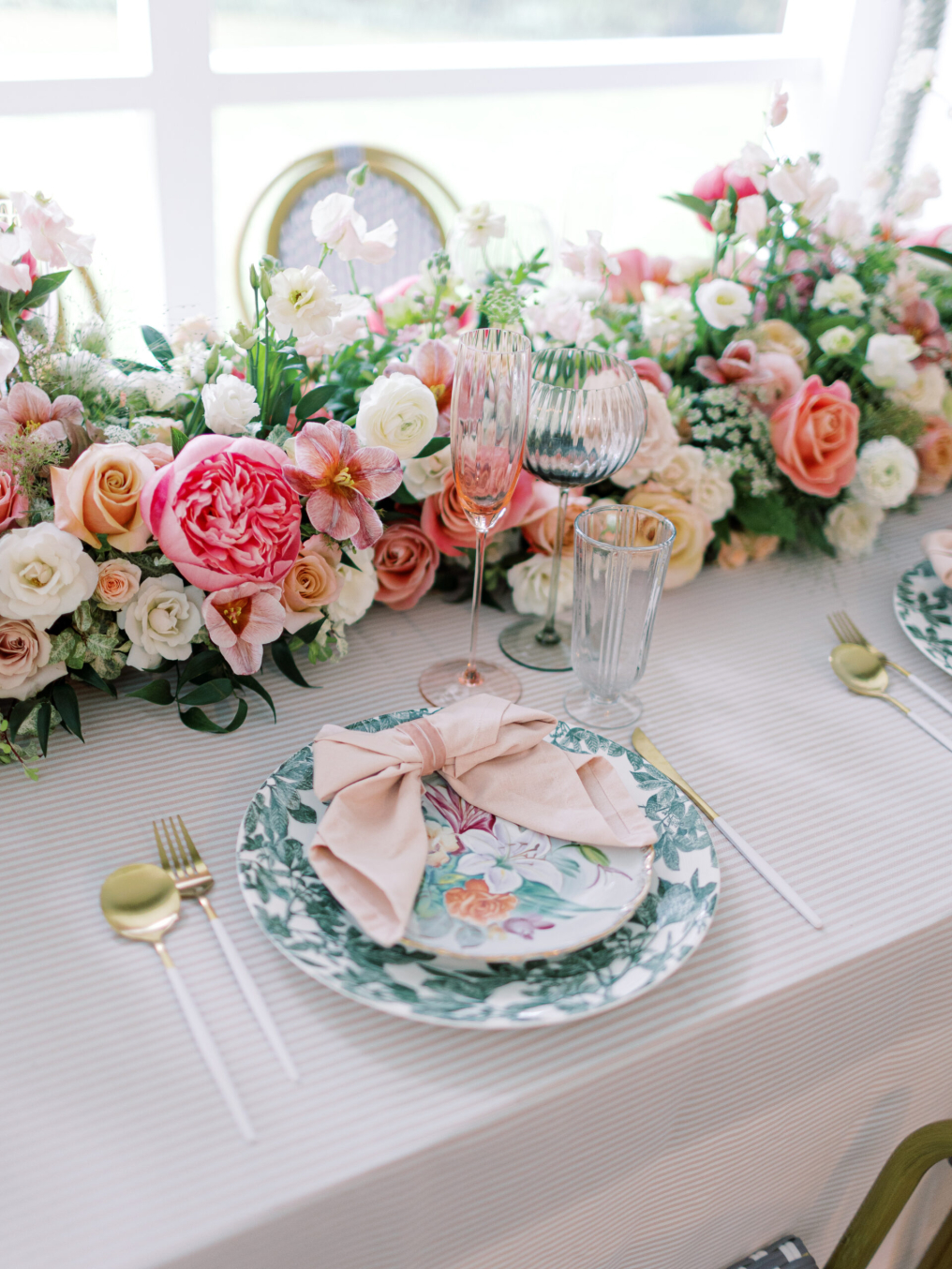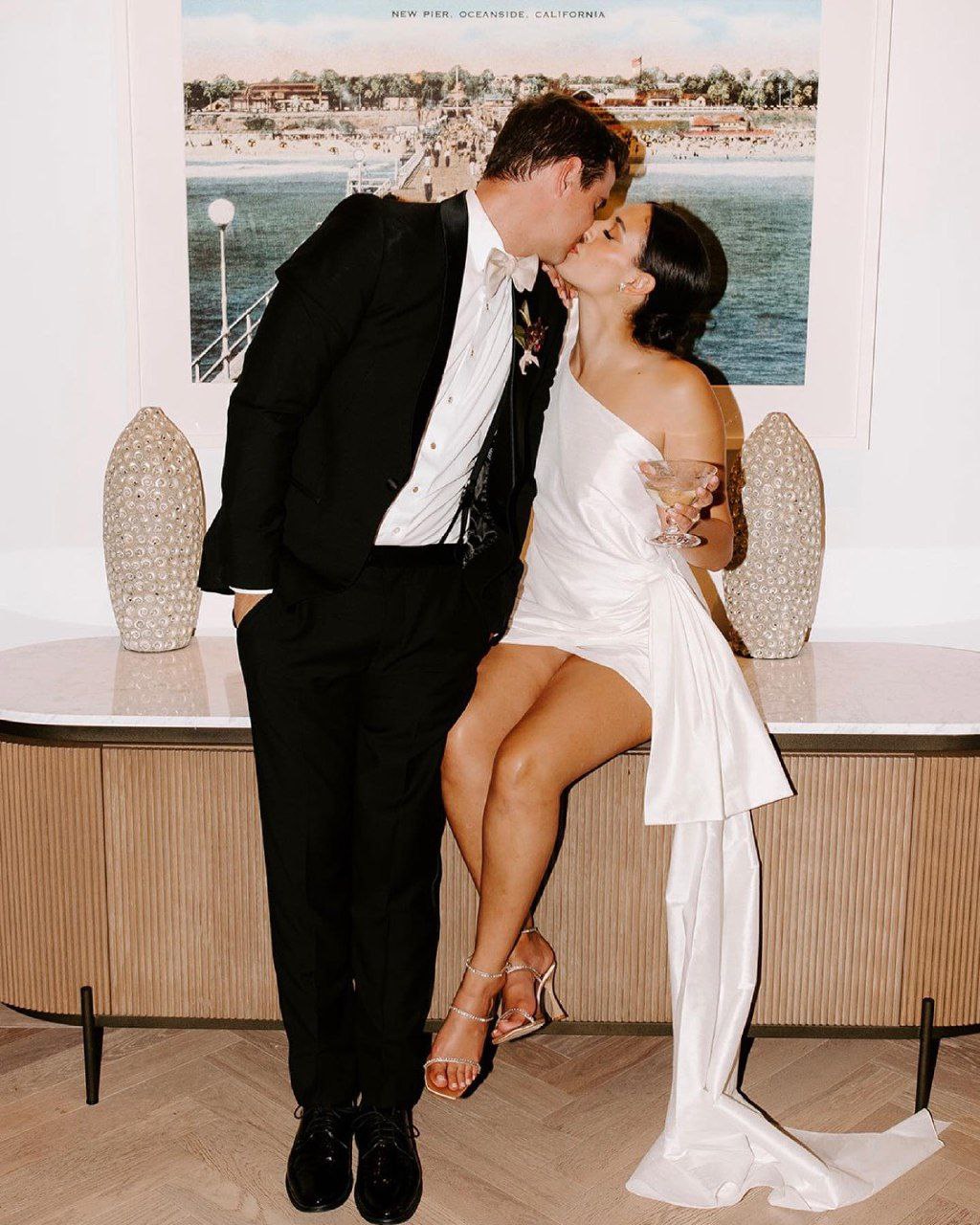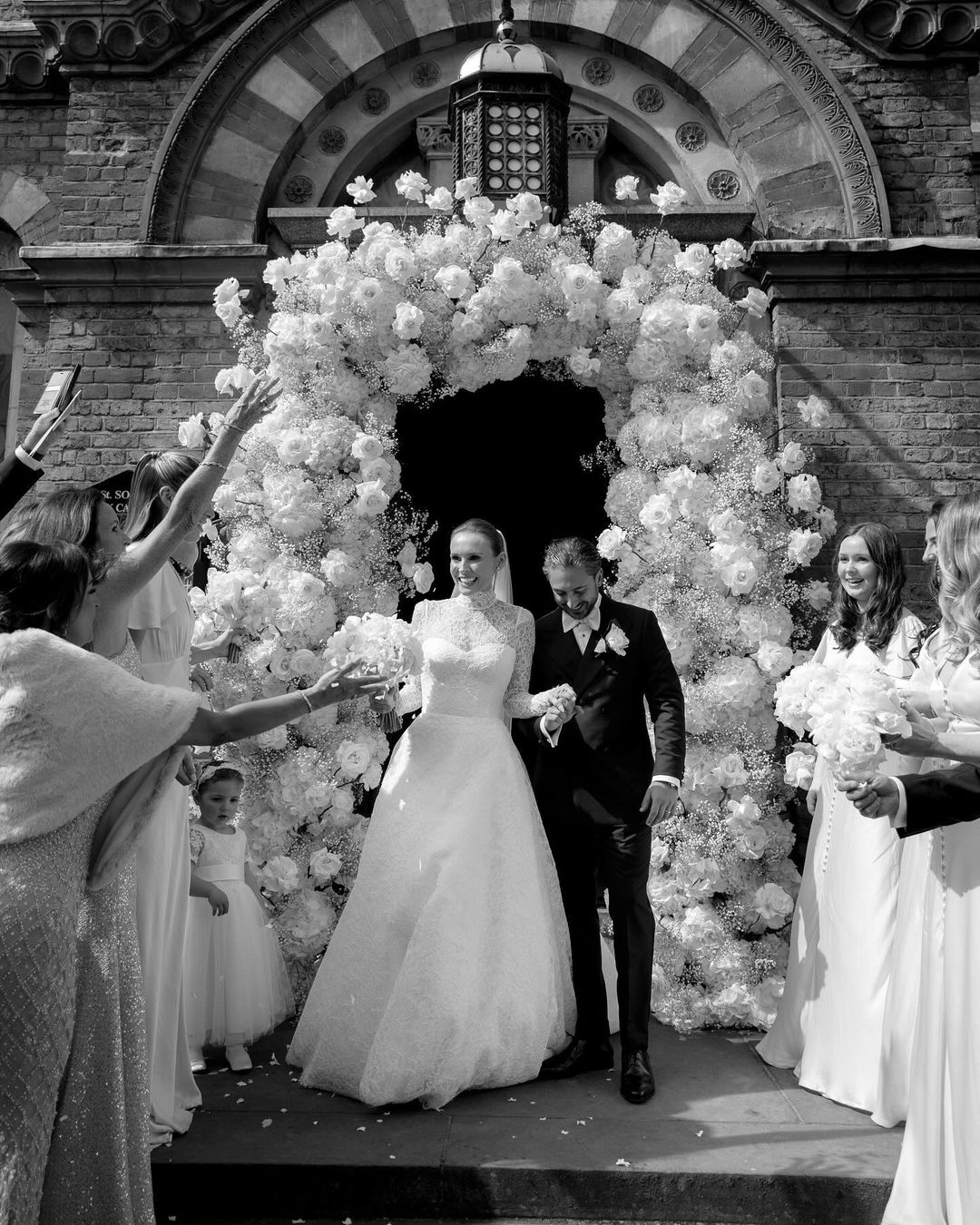Famous London Weddings Through History
- Author: Natali Grace Levine
- Reading time: 7 min 46 sec
- Publication date: 06/28/2024
- Updated: 01/14/2025
- Queen Victoria and Prince Albert - 1840
- King George VI and Lady Elizabeth Bowes-Lyon - 1923
- Queen Elizabeth II and Prince Philip - 1947
- Elizabeth Taylor and Michael Wilding - 1952
- Paul McCartney and Linda Eastman - 1969
- Princess Diana and Prince Charles - 1981
- Jude Law and Sadie Frost - 1997
- Elton John and David Furnish - 2005
- Prince William and Kate Middleton - 2011
- Prince Harry and Meghan Markle - 2018
London, a city steeped in history and tradition, has long been a favored backdrop for some of the most celebrated and iconic weddings in the world. Its rich tapestry of historical landmarks, royal palaces, and quaint chapels offers a picturesque setting that has attracted couples from the royal family to global celebrities. These weddings are not just lavish affairs but are deeply intertwined with the cultural and social fabric of their times, each telling a unique story of love, tradition, and spectacle.
From the intimate and private to the grand and globally televised, London’s most famous weddings have set trends, captured the public’s imagination, and influenced wedding styles worldwide. Let’s walk down the aisle of history and take a closer look at each of these iconic London weddings, understanding what made them so memorable and how they contributed to the lore and allure of one of the world’s most beloved cities.
Find Your Perfect Wedding Vendors
Queen Victoria and Prince Albert - 1840
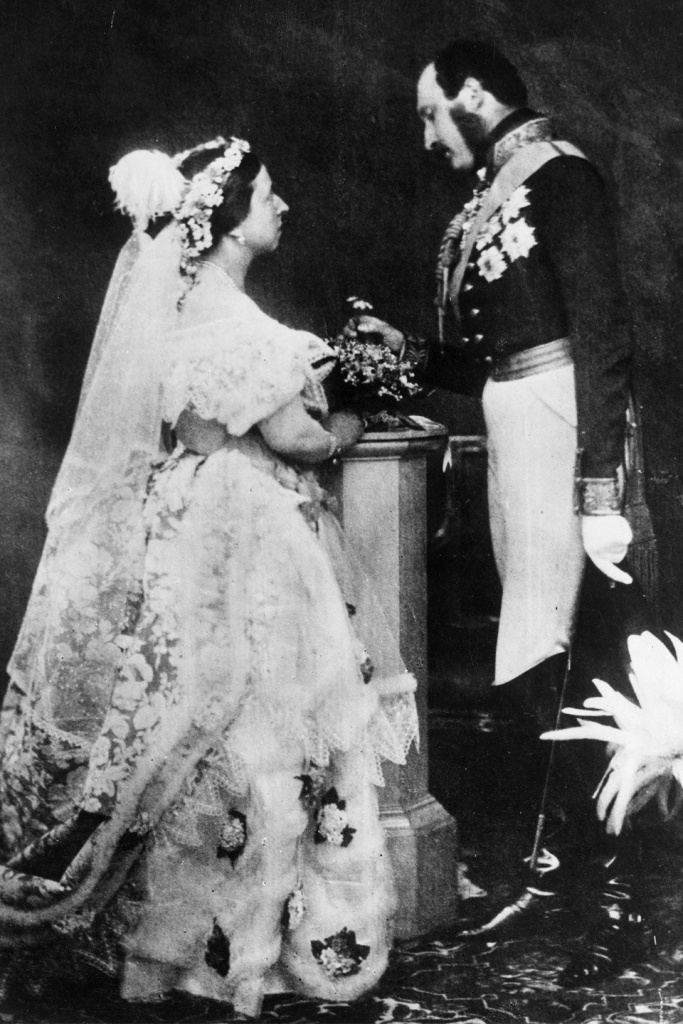
On February 10, 1840, Queen Victoria, aged 20, married her cousin Prince Albert at the Chapel Royal of St. James's Palace in London. This union began unconventionally with Victoria proposing to Albert, setting the tone for a marriage that would captivate the public and influence royal traditions for generations. Victoria's choice of a white silk satin gown sparked a lasting trend for brides worldwide. Her ensemble, complete with a wreath of orange blossoms and a Honiton lace veil crafted by 200 workers over six months, was nothing short of spectacular.
The ceremony, conducted by the Archbishop of Canterbury, was witnessed by about 300 guests, including notable figures such as the Duke of Sussex, who gave Victoria away. The celebration featured an impressive wedding cake measuring 3 yards in circumference and 14 inches in height. Albert's gift to Victoria, a serpent ring set with an emerald, symbolized their eternal love. Following the vows, the couple enjoyed a wedding breakfast at Buckingham Palace before a brief honeymoon at Windsor Castle.
This royal union was more than just a love match; it served as a significant political alliance between Britain and the German states. Despite Albert's initial lack of fluency in English, the couple's affection was evident and met with great public enthusiasm. Their wedding set numerous precedents for royal nuptials and influenced wedding customs that persist to this day.
King George VI and Lady Elizabeth Bowes-Lyon - 1923
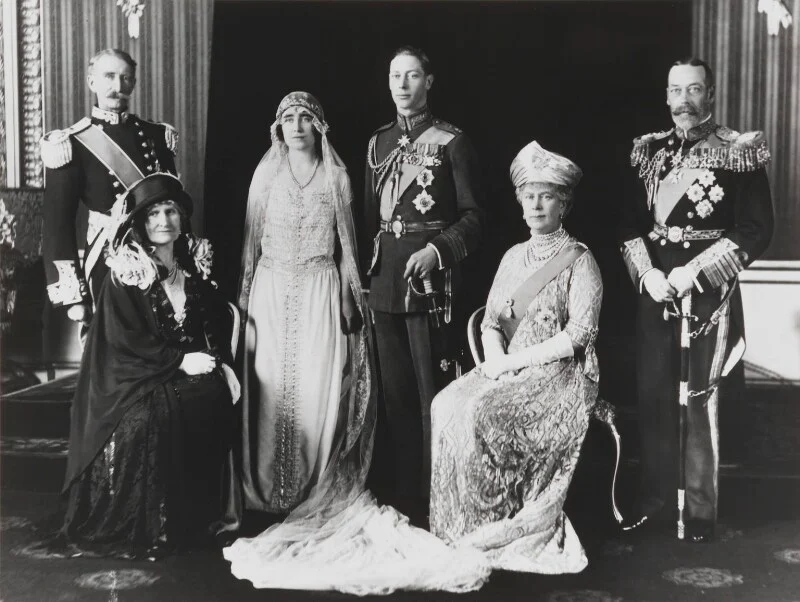
On April 26, 1923, the Duke of York, Prince Albert (later King George VI), married Lady Elizabeth Bowes-Lyon at Westminster Abbey, marking the first royal wedding at this iconic venue in the 20th century. This union was notable for breaking with tradition, as Elizabeth was not of royal birth, being the daughter of a Scottish aristocrat. The couple's romance had blossomed over several years, with Prince Albert proposing three times before Elizabeth finally accepted, concerned about the pressures of royal life.
The wedding was a grand affair that captured the nation's imagination. Elizabeth's wedding dress, designed by Madame Handley Seymour, was a simple yet elegant creation in the fashion of the 1920s. It featured a straight silhouette embroidered with pearls and silver thread, complemented by a Flanders lace veil borrowed from Queen Mary. The bride carried a bouquet that included a sprig of myrtle grown from a cutting taken from Queen Victoria's wedding bouquet, continuing a royal tradition. In a gesture that would become a tradition for royal brides, Elizabeth laid her bouquet on the Tomb of the Unknown Warrior as she entered the Abbey.
The ceremony was broadcast on radio, a first for a royal wedding, allowing the public to feel part of the celebration. Following the nuptials, the newlyweds appeared on the balcony of Buckingham Palace, another tradition that continues to this day.
Queen Elizabeth II and Prince Philip - 1947
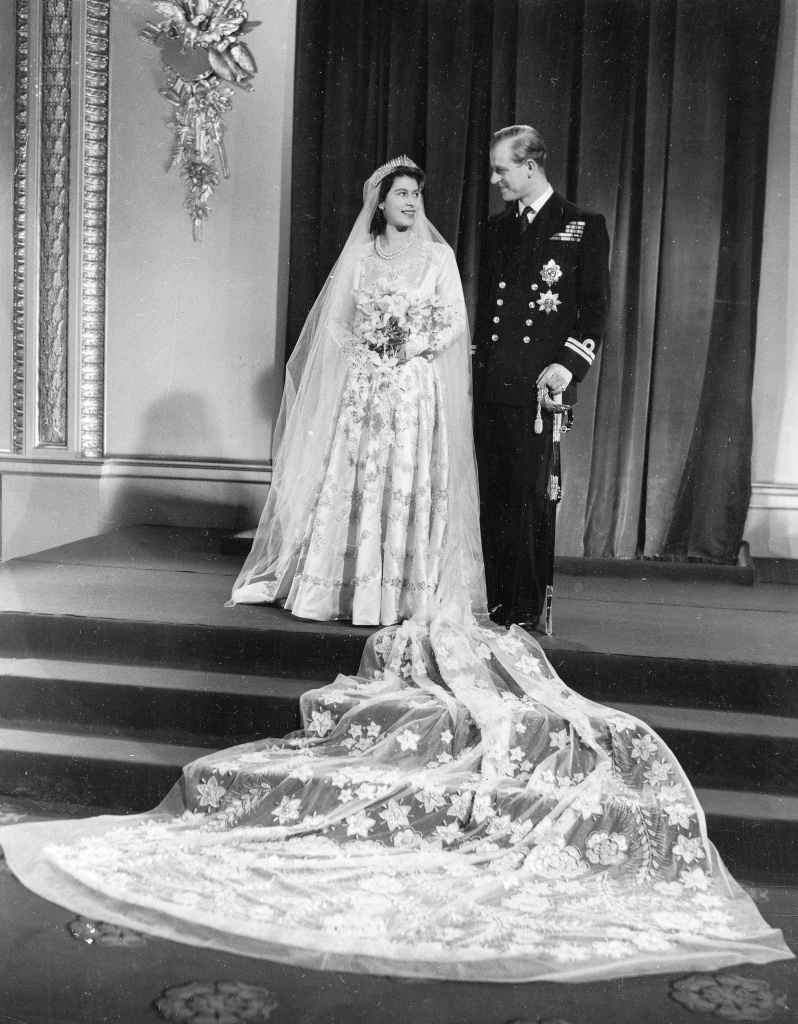
On November 20, 1947, Princess Elizabeth, heir presumptive to the British throne, married Lieutenant Philip Mountbatten at Westminster Abbey. This union, occurring in the aftermath of World War II, captured the imagination of a nation still grappling with post-war austerity.
Elizabeth, aged 21, had saved up ration coupons to purchase material for her wedding dress, a gesture that endeared her to the public. The gown, designed by Norman Hartnell, was a masterpiece adorned with 10,000 seed pearls and crystals, featuring a magnificent 13-foot train. In a dramatic moment just before the ceremony, the diamond tiara Elizabeth was to wear snapped and had to be hastily repaired by a jeweler.
The wedding was a global event, broadcast to 200 million radio listeners worldwide. It marked several firsts and set new traditions. The couple's wedding breakfast included dishes named in their honor, such as "Filet de Sole Mountbatten" and "Bombe Glacee Princesse Elizabeth." Among the 2,500 wedding gifts they received from the public were numerous food items, a reflection of the ongoing rationing. One particularly unique gift came from Mahatma Gandhi - a piece of cotton he had hand-spun himself.
Elizabeth Taylor and Michael Wilding - 1952
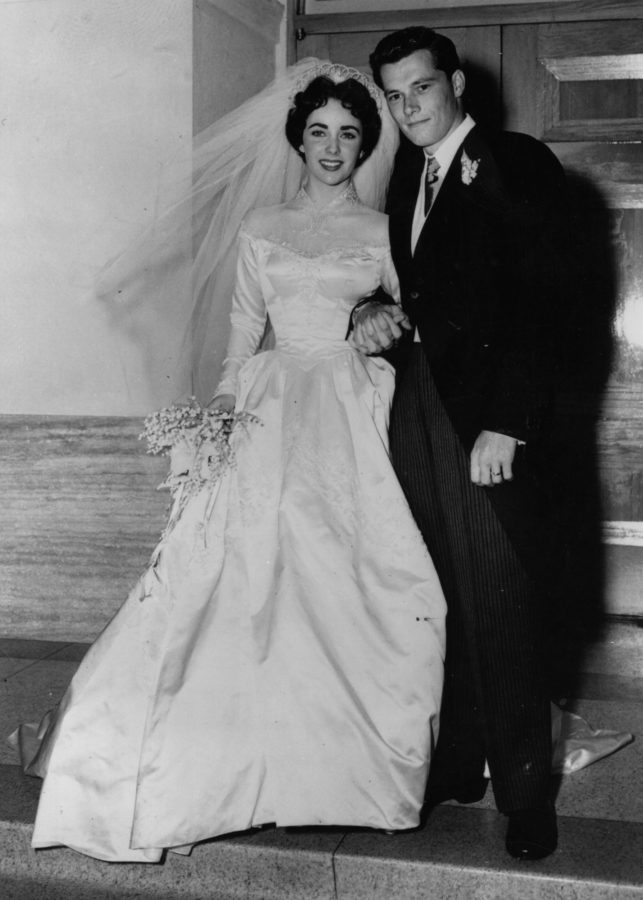
On February 21, 1952, Elizabeth Taylor, already a rising star at the age of 19, married British actor Michael Wilding in a quiet ceremony at Caxton Hall in London. This union marked Taylor's second marriage, coming just over a year after her divorce from her first husband, Conrad Hilton Jr. The wedding was a stark contrast to the lavish Hollywood affairs typically associated with celebrity nuptials of the time.
The ceremony was a low-key event, reflecting the couple's desire for privacy amidst Taylor's growing fame. Elizabeth wore a simple, elegant suit rather than a traditional wedding gown, eschewing the glamorous image she often portrayed on screen. The wedding was attended by only a handful of close friends and family members, with no press allowed inside the venue. This intimate approach was partly due to the 20-year age difference between the couple, which had already stirred public interest and some controversy.
Paul McCartney and Linda Eastman - 1969
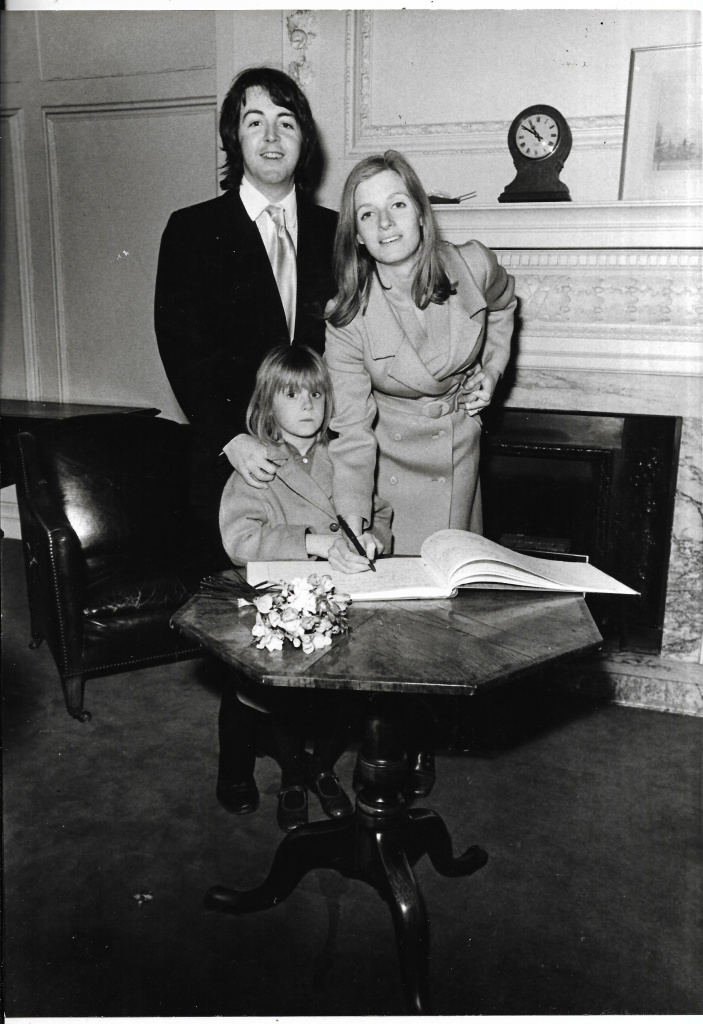
On March 12, 1969, in the midst of the Beatles' tumultuous final year, Paul McCartney married American photographer Linda Eastman at the Marylebone Registry Office in London. This union, which would become one of rock music's most enduring love stories, took place against a backdrop of intense media scrutiny and fan hysteria.
The wedding was a surprisingly modest affair for one of the world's biggest pop stars. Paul wore a dark suit, while Linda, who was four months pregnant with their daughter Mary, opted for a simple yellow coat over a frock. The ceremony was brief, lasting only four minutes. In a touch of drama befitting a Beatle's wedding, the couple arrived an hour late due to Paul's brother and best man, Mike McGear, missing his train from Birmingham.
Despite attempts to keep the event low-key, hundreds of fans gathered outside the registry office, many of them in tears at the news of Paul's marriage. The couple's wedding breakfast consisted of sausage rolls and Coca-Cola at Paul's home in St. John's Wood. Notably absent were the other Beatles, highlighting the growing tensions within the band. John Lennon reportedly quipped, "How did John and Paul get married at the same time?" referring to his own wedding to Yoko Ono just days earlier.
Princess Diana and Prince Charles - 1981
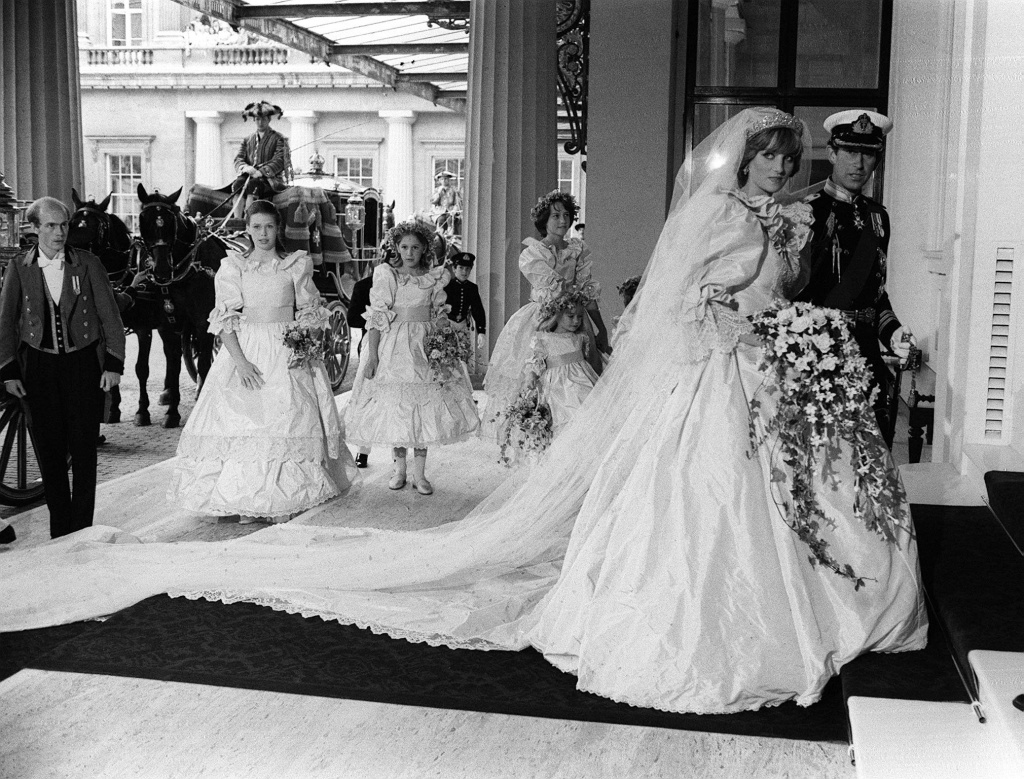
On July 29, 1981, the world witnessed what was dubbed the "wedding of the century" as Lady Diana Spencer married Charles, Prince of Wales, at St. Paul's Cathedral in London. This grand event captured global attention, with an estimated 750 million people tuning in to watch the ceremony on television. The wedding was a lavish affair that seemed to bring the notion of fairytales to life, with Diana arriving in a glass coach and wearing an elaborate gown that would become one of the most famous wedding dresses in history.
Diana's dress, designed by David and Elizabeth Emanuel, was a sight to behold. It featured a 25-foot train, the longest in royal wedding history, and was adorned with 10,000 pearls and sequins. The bride also wore the Spencer family tiara and carried a cascading bouquet of gardenias, stephanotis, freesias, orchids, lily of the valley, and yellow roses.
The wedding was not just a personal milestone for the couple but also a major state occasion. The guest list included numerous foreign royals, heads of state, and celebrities. The streets of London were lined with an estimated 600,000 people hoping to catch a glimpse of the procession. Following the ceremony, the newlyweds appeared on the balcony of Buckingham Palace, where they shared a kiss – a gesture that has since become a tradition for royal weddings.
Jude Law and Sadie Frost - 1997
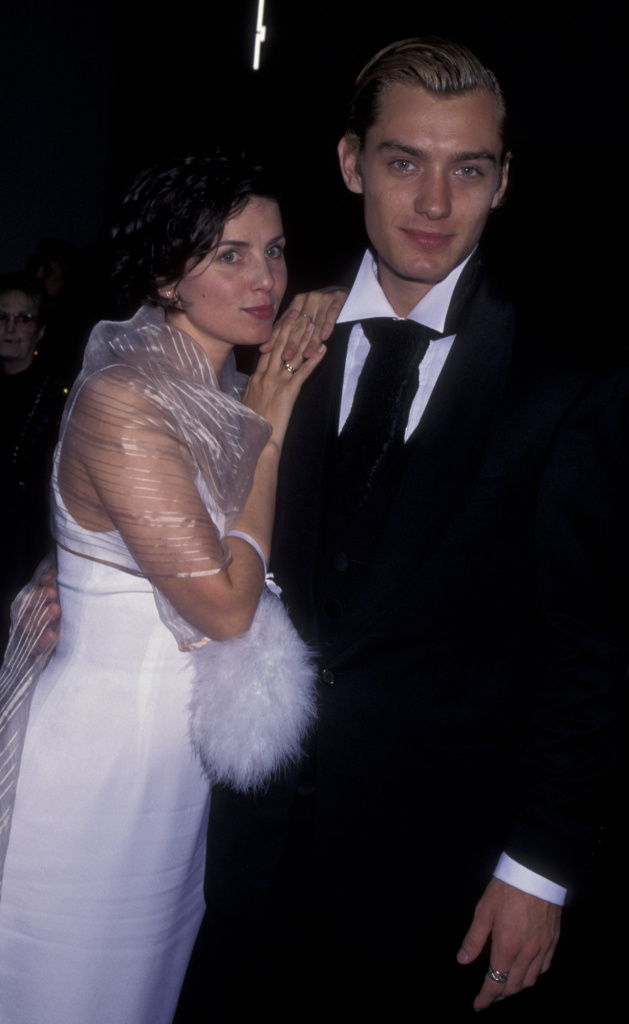
On September 2, 1997, Jude Law and established actress Sadie Frost exchanged vows in a charming ceremony at All Saints church in London's trendy Primrose Hill neighborhood. The wedding marked a milestone for the couple, who had been together for three years and already had a 9-month-old son, Rafferty. Jude, 24 at the time, cut a dashing figure in a pale blue suit, while Sadie, 31, eschewed traditional bridal wear in favor of a sleek white slip dress designed by her friend Pearl Lowe.
The intimate ceremony was followed by a reception at the nearby home of Sadie's mother, maintaining a personal and relaxed atmosphere. The guest list read like a who's who of British entertainment, with celebrity friends such as Jonny Lee Miller and Kate Moss in attendance. This wedding was not just a union of two individuals, but also a merging of two generations of British film talent, with Jude's career on the rise and Sadie already well-established in the industry.
Elton John and David Furnish - 2005
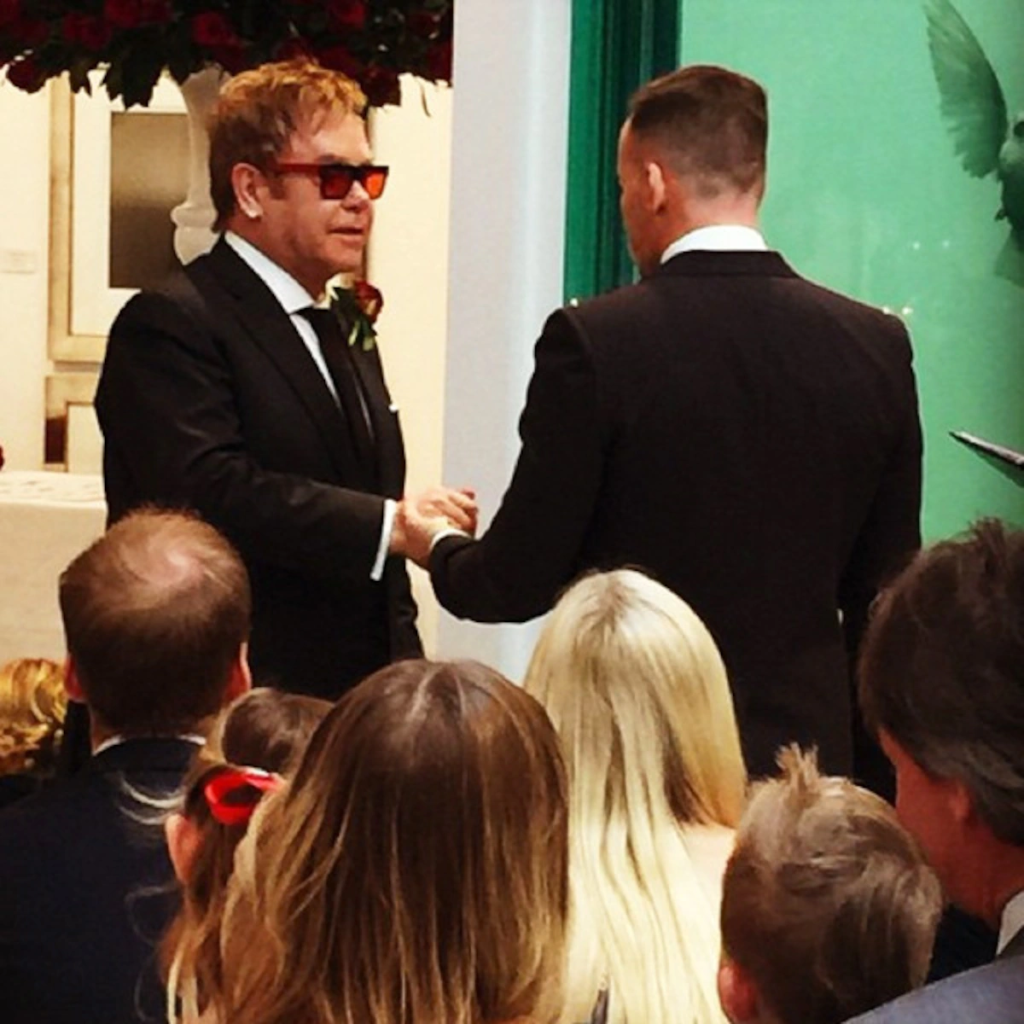
On December 21, 2005, Sir Elton John and David Furnish marked a significant milestone in both their personal lives and in the broader context of LGBTQ+ rights in the UK. The couple formalized their 12-year relationship by entering into one of England's first same-sex civil partnerships at the Windsor Guildhall.
The ceremony itself was a relatively understated affair, contrasting with Elton's typically extravagant public persona. Both men arrived in dark suits, exchanging vows in a brief 30-minute ceremony attended by a small group of family and friends.
Following the official proceedings, the couple hosted a considerably more lavish reception at their Windsor mansion. This star-studded event, reportedly costing around £1 million, was attended by numerous celebrities from the entertainment world. In a thoughtful gesture reflecting their commitment to social causes, the couple requested that guests make donations to HIV/AIDS charities in lieu of wedding gifts.
Prince William and Kate Middleton - 2011
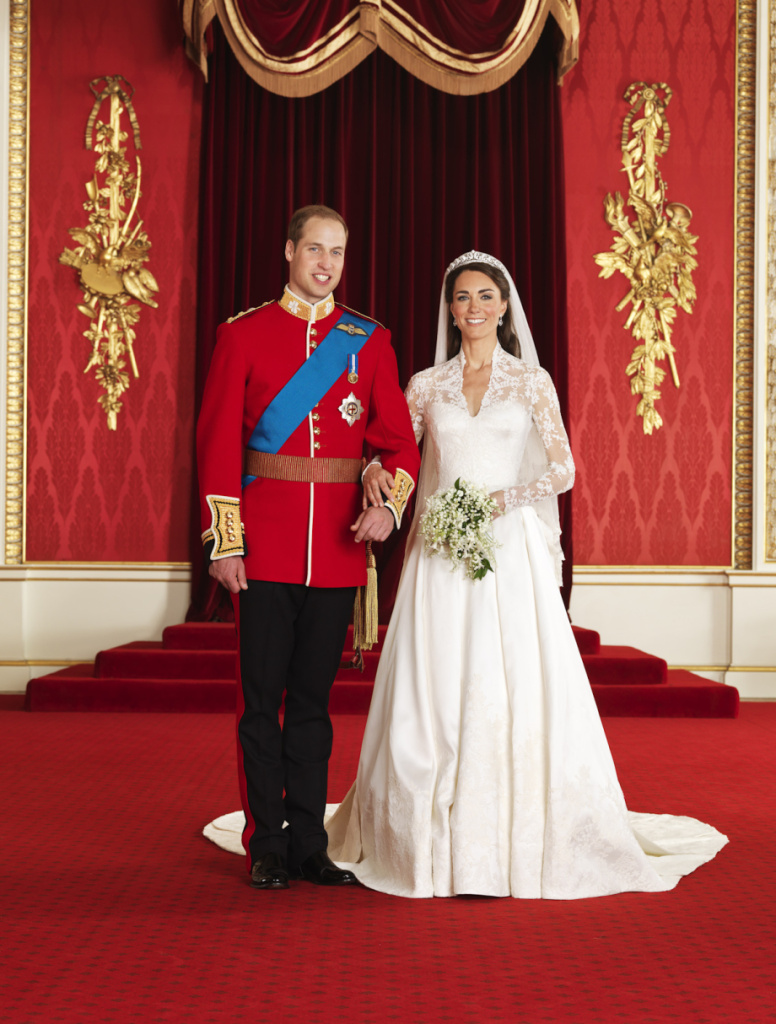
On a spring day that captivated the world, Prince William and Catherine Middleton exchanged vows at Westminster Abbey on April 29, 2011. This union bridged the gap between royalty and the common people, as Catherine, a commoner, stepped into the role of future queen.
The bride's arrival at the Abbey in a Rolls-Royce Phantom VI marked the beginning of a ceremony watched by billions. Catherine's gown, a closely guarded secret until that moment, was revealed to be a stunning creation by Sarah Burton for Alexander McQueen. The dress, with its lace bodice and sleeves, combined timeless elegance with modern sophistication. William, resplendent in his red Irish Guards uniform, waited at the altar, occasionally exchanging glances with his brother and best man, Prince Harry.
Following the ceremony, London erupted in celebration as the newlyweds made their way to Buckingham Palace. The balcony kiss, a tradition started by William's parents, delighted the crowds. But it was the couple's departure from the palace that truly captured their down-to-earth nature. Trading the traditional carriage for Prince Charles's Aston Martin DB6 Volante, complete with a "JU5T WED" license plate, William and Catherine drove off to continue their private celebrations.
Prince Harry and Meghan Markle - 2018
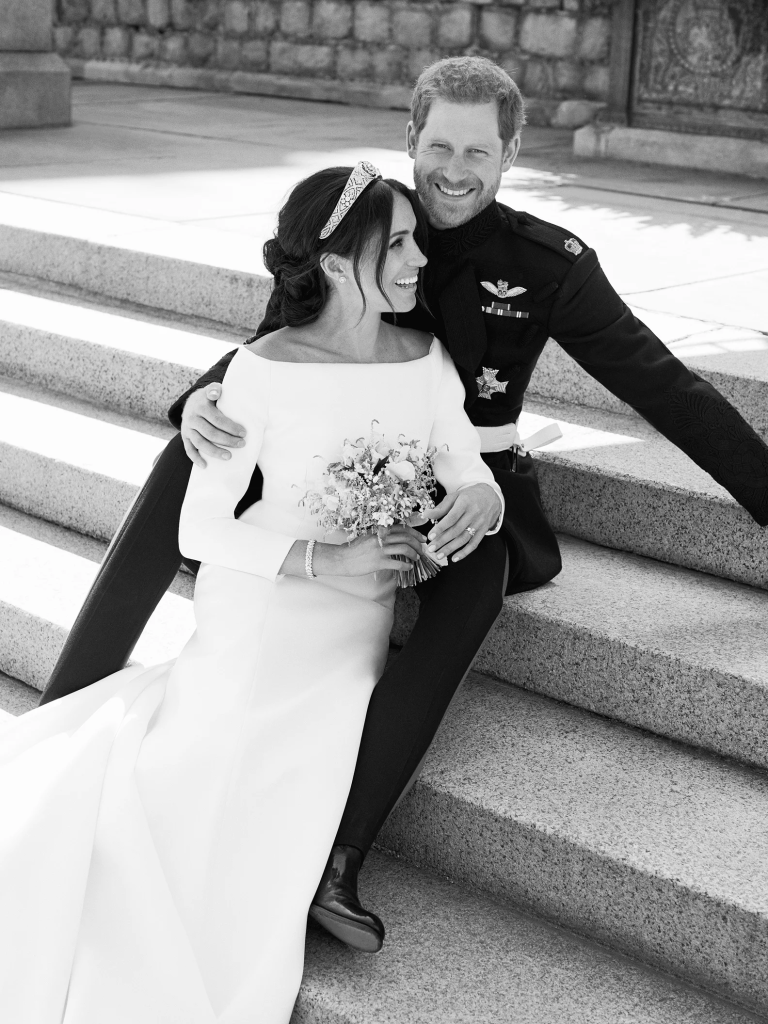
The wedding of Prince Harry and Meghan Markle on May 19, 2018, at St. George's Chapel in Windsor Castle, brought a modern twist to British royal traditions, blending classical elements with inclusive, contemporary touches. Meghan’s elegant dress, designed by Clare Waight Keller for Givenchy, featured a boat neckline and a veil adorned with flowers representing the Commonwealth countries, symbolizing her transition into royal duties. The ceremony included a notable sermon by the American Bishop Michael Curry and performances by a gospel choir, infusing the event with a vibrant, cross-cultural energy.
Following the ceremony, the couple hosted two receptions: a traditional lunch with guests at St. George's Hall and a more intimate evening gathering at Frogmore House. The evening event, hosted by Prince Charles, featured a laid-back vibe with Elton John performing and a fireworks display, showcasing the couple’s modern and personal approach to royal celebrations.
The wedding not only highlighted the couple’s unique background and values but also marked a significant step towards a more inclusive and diverse representation within the British monarchy. With millions worldwide watching, the event was widely praised for its embrace of modernity and diversity, setting new precedents for future royal weddings.







